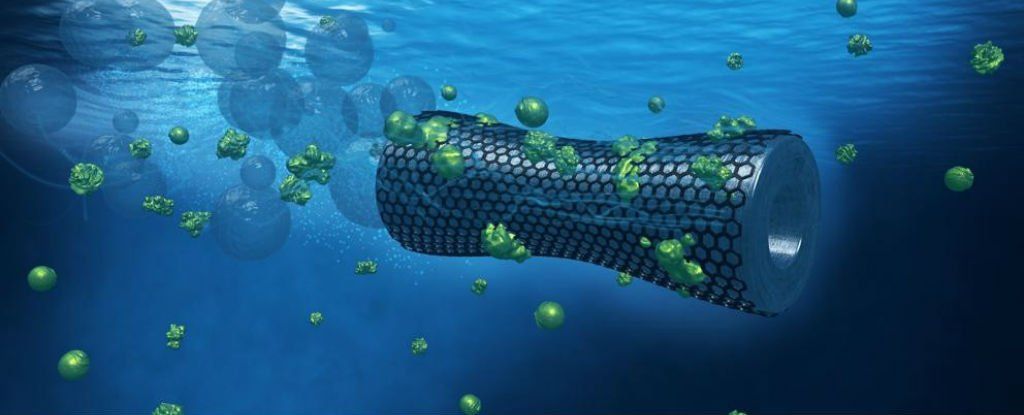Swarms of graphene-coated nanobots could be our best hope yet of cleaning up the murky oceans, with scientists demonstrating that new microscopic underwater warriors can remove up to 95 percent of lead in wastewater in just 1 hour.
The invention couldn’t have come at a better time, with ocean pollution at an all-time high, much of it stemming from industrial activities such as electronics manufacturing. By 2050, it’s estimated that there will be more plastic than fish in the world’s oceans, and waste metals such as lead, arsenic, mercury, cadmium, and chromium are affecting the delicate ecological balance that will make things very difficult for any animal that relies on it for food — including humans — in the near future.
Developed by an international team of researchers, the newly developed nanobots have three key components: a graphene oxide exterior to absorb lead (or another heavy metal); a nickel core that enables researchers to control the nanobots’ movement via a magnetic field; and an inner platinum coating that functions as an engine and propels the bots forward via a chemical reaction with hydrogen peroxide.
